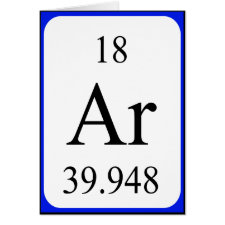
Authors: Perollier C, Alix F, Travers J, Naraghi K, Bayoudh S
Article Title: Fast and Selective Purification of a Fluorous Radiotracer using SPE based on Molecularly Imprinted Polymers.
Publication date: 2012
Journal: European Journal of Nuclear Medicine and Molecular Imaging
Volume: 39
Issue: (Supplement 2)
Page numbers: S378-S379.
DOI: 10.1007/s00259-012-222-8
Abstract: Aims: In Fluorine-18 chemistry, separation between the precursor/impurities and the corresponding radiotracer is difficult. Rapidity and efficiency are required to facilitate the purification of the fluorous radiotracer due to the radiotracer lifetime. We developed new solid phases for purification of 18F radiotracers in a SPE format easily adaptable for automation excluding the use of preparative HPLC. Methods and Results: We have developed a patented method based on the Molecularly Imprinted Technology. Molecularly Imprinting Polymers (MIP) are a synthetic material with artificially generated three-dimensional network able to specifically rebind a target molecule. MIPs have the advantages to be not only highly selective and specific but also chemically and thermally stable. So these polymers are used as a powerful technique for clean-up and pre-concentration applications. Aliphatic and aromatic nucleophilic fluorations have been explored for the purification of fluorous radiotracers using AFFINIMIP® SPE cartridges. Sulfonated precursors of radiotracers were labelled through the leaving group used for aliphatic nucleophilic substitution. Then the fluorination was carried out in the presence of Kryptofix 2.2.2 and potassium fluoride in Acetonitrile at 95°C. Finally we realized the solid phase extraction of the fluorous radiotracer from the crude mixture using an AFFINIMIP® SPE cartridge that is specific to the labelled group. The crude mixture was loaded on the SPE cartridge and the cartridge was washed with Acetonitrile. The HPLC-MS analysis shows that the first Acetonitrile fractions were constituted of the radiotracer (more than 95 % recoveries) and no trace of the labelled precursor and of the labelled sulfonic acid were detected. Thus via the labelled leaving group of the precursor, a fast and selective purification can be realized using a MIP SPE leading to the fluorous radiotracer. During an aromatic nucleophilic fluoration using p-substituted phenyltrialkylammonium compounds as precursors, the corresponding phenyldialkylamino and phenolic impurities in addition to the fluorous radiotracer may be detected. The extraction of the fluorous radiotracer from the precursor/impurities using an AFFINIMIP® SPE cartridge was able to get the radiotracer without any contamination of the precursor and the different impurities using one single SPE cartridge. Conclusions: We developed new phases based on MIPs allowing to access to fluorous radiotracers without any contamination of the precursor and/or impurities using a SPE cartridge easily adaptable for automation. The use of a single SPE cartridge allows to gain in rapidity and efficiency and to avoid the use of a preparative HPLC.



Join the Society for Molecular Imprinting

New items RSS feed
Sign-up for e-mail updates:
Choose between receiving an occasional newsletter or more frequent e-mail alerts.
Click here to go to the sign-up page.
Is your name elemental or peptidic? Enter your name and find out by clicking either of the buttons below!
Other products you may like:
 MIPdatabase
MIPdatabase









